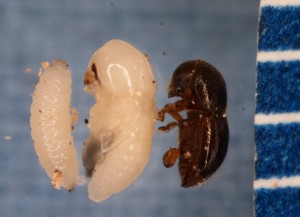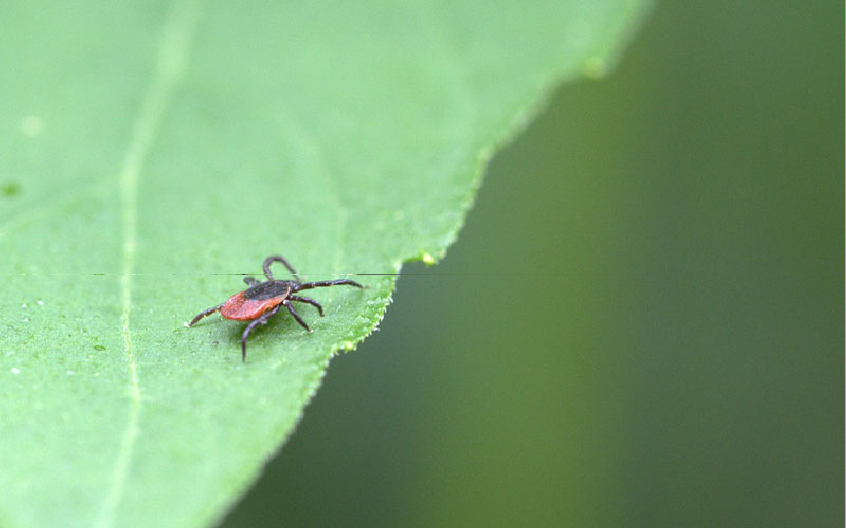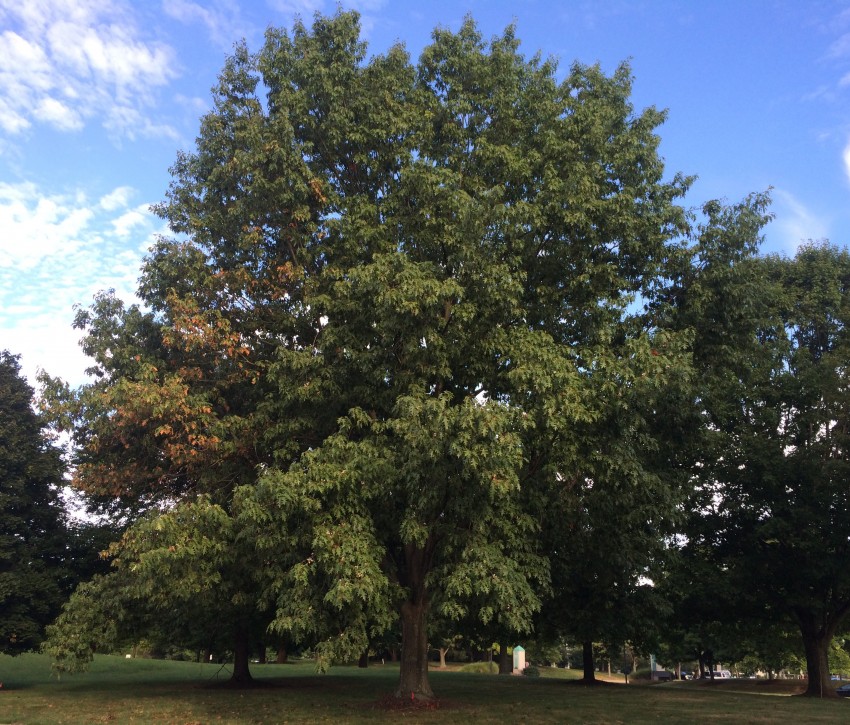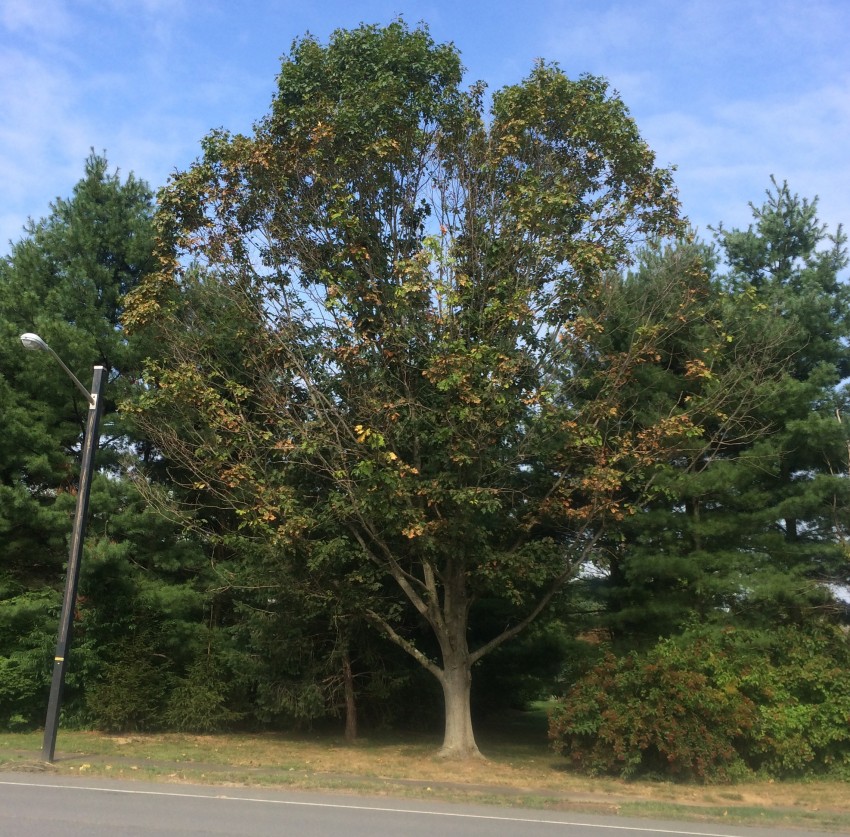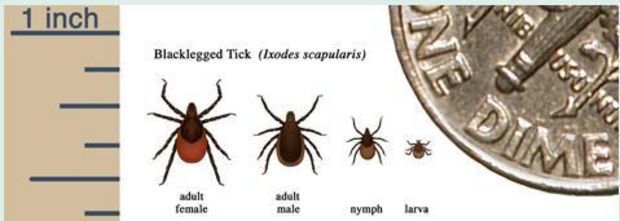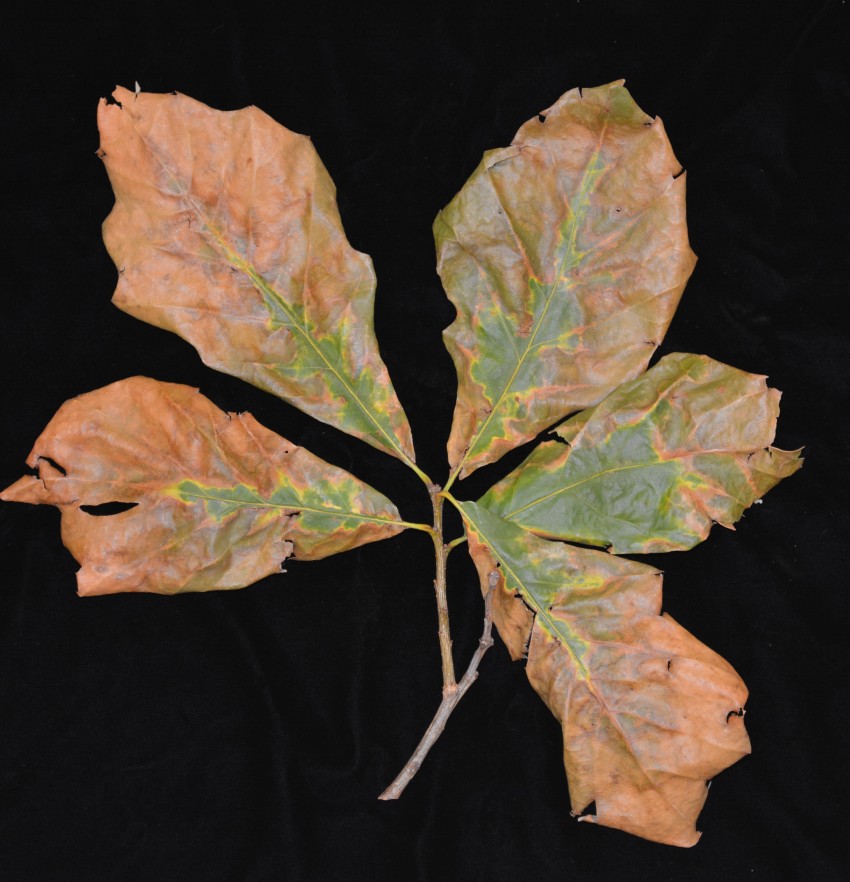Asian Longhorned Beetle and now the Emerald Ash Borer garner all the attention, but a group of tiny exotic wood boring beetles, known as “Asian Ambrosia Beetles,” has been quietly invading the state for the last decade. First appearing in our laboratory database in 2006, by 2008 these beetles had found widespread distribution in the mid-Atlantic and Northeast region.
While we have seen these ambrosia beetles sporadically in nurseries and landscapes over the last few years, this spring one of the invasive ambrosia beetles, the Granulate Ambrosia Beetle, Xylosandrus crassiusculus, has made its presence known in a big way. This tiny, chestnut colored beetle is a pest of woody ornamental, fruit, and nut trees and can cause significant damage to otherwise healthy trees and shrubs in nursery, landscape, and orchard settings. Ornamental nursery stock seems to be particularly susceptible, and until now, nursery growers were our primary clients dealing with this problem.

Photo: Richard Buckley, Rutgers PDL

Adult beetles never leave the
log in the laboratory.
Photo: Sabrina Tirpak, Rutgers PDL
Granulate ambrosia beetles have been reported to damage over 100 species of trees including: cherry, Chinese elm, dogwood, fig, Japanese maple, golden rain tree, magnolia, pecan, peach, persimmon, plum, red maple, redbud, styrax, Shumard oak, and sweet gum. This season the Plant Diagnostic Lab has seen samples of dogwood, fig, maple, pawpaw, styrax, and zelkova.

ambrosia beetle activity in a large zelkova.
Photo: Thom Ritchie, Thomas E. Ritchie Landscaping
Adult beetles overwinter inside galleries constructed in trees on “forested” locations. In the spring, mated females (males don’t fly) disperse to other local host trees, which are often in nurseries and on landscaped sites. By some accounts, the spring migration occurs between 300 and 800 growing degree-days or when day temperatures reach 70°F. Trap catches indicate the beetles fly throughout the summer and into the fall, but new infestations are generally only seen in late-spring.

go into the heartwood.
Photo: Sabrina Tirpak, Rutgers PDL

toothpicks, and small round exit holes.
Photo: Sabrina Tirpak, Rutgers PDL
Once in the new host, female beetles excavate galleries into the heartwood of the main stem as well as twigs and branches in the lower part of the canopy. This tunneling activity pushes out strings of boring dust that are approximately one inch long. These strings are quite distinct and have accurately been described as “toothpicks.” There are often several hundred of these boring sites on an individual tree, so there is no mistaking these critters for anything else! Mass attack by the beetles usually results in a rapidly declining tree.

invade pawpaw!
Photo: Jan Zientek, RCE of Essex County
Inside the galleries the beetles farm fungi, called ambrosia, which they have carried to the tree in basket-like structures, called mycangia, on the tops of their bodies. Once the fungus crop is established, eggs are laid in small chambers that hatch into legless larvae. Both the adults and larvae feed on fungus rather than on the host plant. Female beetles remain in the tree with their brood until the larvae pupate into adults (in our lab, the adults never leave the cut logs). Newly emerged adult beetles (mostly females) mate with their brothers before leaving the galleries for overwintering sites. There is one generation per year in New Jersey with reports of two in the southern states.

beetle activity in styrax.
Photo: Sabrina Tirpak, Rutgers PDL
Interestingly enough, species of the fungi Ambrosiella and Fusarium have been isolated from granulate ambrosia beetle bodies. These fungi not only survive in the galleries, but spread within the tree into the intercellular spaces and possibly into the xylem. The pathogenicity of these fungi, however, has not been determined by proper plant pathology, so the relationship to plant health is vague. As such, it is very difficult to determine if the beetles alone are killing the tree or if the symbiotic fungi they bring along are responsible.

granulate ambrosia beetles.
Photo: Richard Buckley, Rutgers PD
Infested trees should be removed and destroyed. On high value trees, like those in nurseries, insecticide interventions may be prudent. Beetle flight can be monitored in the spring with ethanol-based lures in Lindgren funnel traps. Once beetles are found in the traps, susceptible trees can be protected with applications of bifenthrin or permethrin. Repeat the treatments at label specified rates and intervals through the spring.

